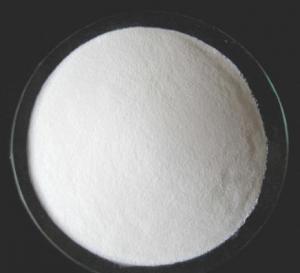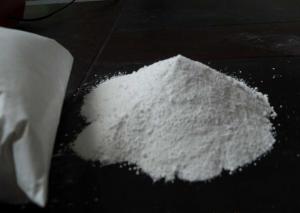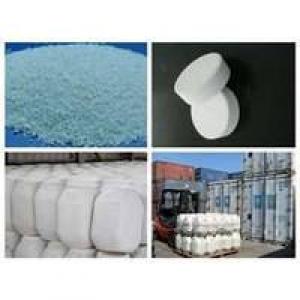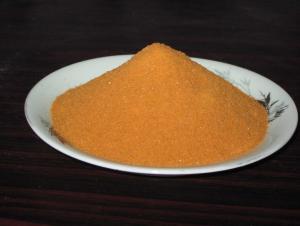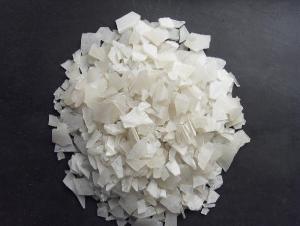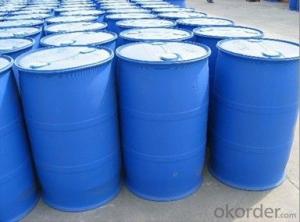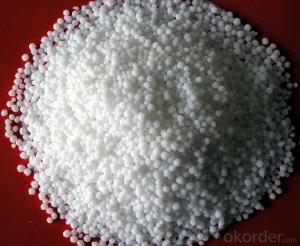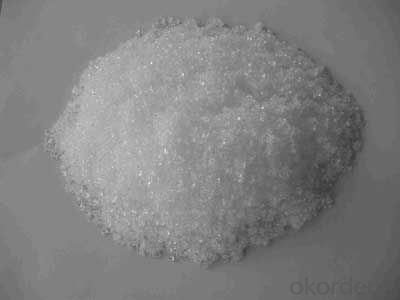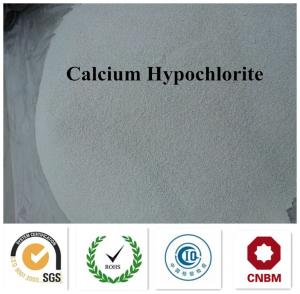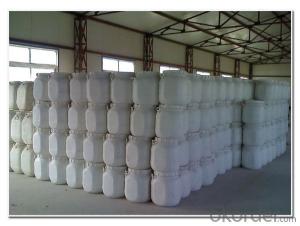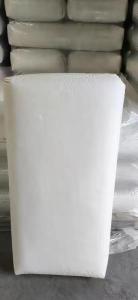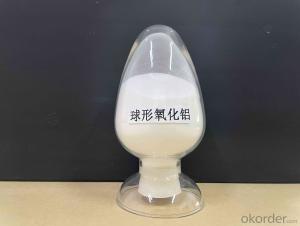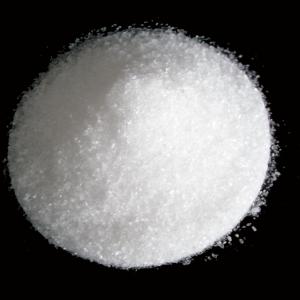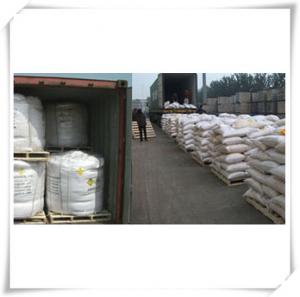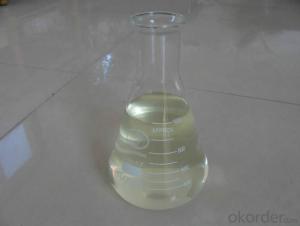Calcium Nitrate Inorganic Salt Construction Chemical
- Loading Port:
- China main port
- Payment Terms:
- TT OR LC
- Min Order Qty:
- 1000 kg
- Supply Capability:
- 500000 kg/month
OKorder Service Pledge
OKorder Financial Service
You Might Also Like
| Calcium nitrate inorganic salt |
Description: Technical standard : Q/140706CSC002-2005 Molecular Formula:Ca(NO3)2.4H2O Colorless transparent crystal,soluble in water, methanol, ethanol, in the air easily flows angle, is the oxidant, the case of organic compounds, sulfur combustion and explosion that occurred. Physicochemical Properties: Calcium nitrate tetrahydrate is a white columnar shape crystal of monoclinic system. A crystallographic form. Specific Density: 1.895. It decomposes at 132°C. The p roduct is apt to dissolve in water, methanol, ethanol, acetone. Not dissolve in nitric acid. The calciu m nitrate is used as an oxidizer. It will burn once in contact with easy combustion things. It has a pro perty of rot ,and it can burn our skin.
Calcium nitrate mainly used in refrigerants, rubber coagulant, is also used in pyrotechnics, tubes, available fertilizer.
Package avoid moisture,seal, shall not organic matter, sulfur mixed storage. storage process to prevent rain and sun exposure.
25/50KGwoven bags or packed according to the requirements of customers..
ItemIndexIndustrial GradeAgricultural Grade content≥99.0%≥99.0%PH value5.0-7.05.0-7.0Heavy metal≤0.0005%≤0.001%Water insoluble≤0.01%≤0.02%Sulphate≤0.02%≤0.02%Iron≤0.002%≤0.01%Chlorites≤0.005%≤0.005%Calcium oxides content(CaO)---≥23.0% content(N)---≥11.7% FAQ 1.Q: What is MOQ? A: Our MOQ is 1 TON. 2.Q: Could you offer free sample? A: We can provide free samples to you for quality testing. 3.Q: What about your packing? A: For liquid: Flexitank, or IBC tank 1000L For powder:Woven fabric bag with plastic film liner( 25kg or 1000kg) Clients’ packing is workable. 4.Q: How about your productive capacity? A: 150000 tons/Year. 5.Q: What is your delivery time? A: Within 7 days after received deposit or L/C at sight. |
- Q:would heterotrophic organism grow well in inorganic salt media? why or why not?
- No. Heterotrophs get energy from the environment in the form of chemical bonds within organic molecules (such as glucose). An inorganic salt medium would not supply the needed organic molecules. Your heterotroph would starve.
- Q:What is the most important inorganic salt in plant growth?
- The inorganic salts required by plants are nitrogen, phosphorus and potassium containing inorganic salts, and if any lack of plants will affect the normal growth of plants, nitrogen is a component of many important organic compounds in the body, such as protein, nucleic acid, chlorophyll , Enzymes, vitamins, alkaloids and some hormones contain nitrogen. Nitrogen is also the basis of genetic material in all organisms, the most important protein, it is often in the center of metabolic activity.Now is to limit the growth of plants and the formation of the primary Factor. It also has a significant effect on improving the quality of the product.K2 is dissolved in the plant juice, and its main function is related to the metabolism of the plant.The content of phosphorus in the plant is second only to nitrogen and potassium, Phosphorus plays an important role in plant nutrition. Almost all important organic compounds in plants contain phosphorus. Phosphorus is involved in photosynthesis, respiration, energy storage and delivery, cell division, cell enlargement and other processes in plants.
- Q:The effect of inorganic salt medium and the difference with enrichment medium
- The enrichment of nutrients is based on the basis of nutrition based on some kind of nutrient-rich substances for the target cells, the purpose is to increase the number of target cells, so that the formation of growth advantages, so as to achieve the purpose of separation, such as we have to be separated Pseudomonas aeruginosa, this bacteria particularly like blood, so you can add blood in the medium, so that the formation of growth advantages of this bacteria.
- Q:An inorganic salt is dissolved in water and yields a solution that has a color. Make a statement about the type of element the substance contains that casuses the color.Thanks!
- Many inorganic salts form colored solutions . pper ( II) sulfate ( Blue ) nickel (II) acetate = green, mangaanse ( II) chloride = pink, iron(III) chloride = yellow, potassium dichromate, orange and so many more Can you be more specific ?
- Q:Why does inorganic salts affect chemical degradation of organic wastewater
- Industrial organic waste water is highly toxic and stable pollutants, for such waste water is difficult to use conventional physical, chemical and biological methods. This paper summarizes the main processing technologies of biodegradable organic wastewater at home and abroad, including biological treatment, chemical treatment and physical treatment and various joint treatment processes. The methods or processes of various methods or processes are described.
- Q:What are the physiological functions of inorganic salts
- Maintain cell osmotic pressure and acid-base balance
- Q:Sodium bicarbonate is not an inorganic salt
- Yes, organic refers to salts with carbon skeleton chains other than carbon and carbon oxides and carbonates, so sodium bicarbonate is an inorganic salt
- Q:what percent of dissolved salts found in seawater are minor inorganic salts, or trace?
- Seawater varies in composition a little but generally is about 3.5% salts. Of this about 3.1% is sodium chloride. So the remaining 0.4% is the other salts (Magnesium, Calcium and Potassium mostly, followed by just about every natural element in the periodic table in trace amounts)
- Q:Inorganic salts are not nutritious
- Nutritional substances are sugar protein fat three nutrients
- Q:What is the risk of low inorganic salt?
- Phosphorus into the body of phosphorus containing 750-800mg about 1% of body weight, mineral weight of 1/4. Of which 87.6% in the form of hydroxyapatite bone salt stored in the bones and teeth, 10% with protein, fat, sugar and other organic matter combined constitute soft tissue, the rest distributed in the muscle, skin, nerve tissue and other tissues and membranes Of the ingredients. Function Phosphorus is present in every cell of the human body, which is indispensable for bone growth, tooth development, renal function and nerve conduction. Phosphorus is a component of nucleic acids, phospholipids and certain enzymes, which promotes growth and tissue repair. It helps carbohydrate fat and protein utilization, regulates glycogen breakdown, and participates in energy metabolism. Phospholipids are the major components of the cell membrane, which are related to the permeability of the membrane. Phosphate can regulate the metabolism of vitamin D, to maintain the stability of calcium within the environment. Lack of disease phosphorus deficiency when the mental confusion, cranial nerve palsy, transport disorders, muscle weakness, hypothyroidism, anorexia, joint stiffness, abnormal blood, urinary calcium increased. Typical cases hyperphosphatemia, renal dysfunction, or hypoparathyroidism and hypothyroidism and other endocrine diseases can also occur. Too many symptoms nerve excitement, tetany and convulsions. The physiological requirement of phosphorus is 12.3mg / kg / d. Calcium / phosphorus ratio in the 2: 1-1: 2 appropriate range. Food sources food in the meat, fish, milk, beans and hard shells and other phosphorus more.
1. Manufacturer Overview |
|
|---|---|
| Location | |
| Year Established | |
| Annual Output Value | |
| Main Markets | |
| Company Certifications | |
2. Manufacturer Certificates |
|
|---|---|
| a) Certification Name | |
| Range | |
| Reference | |
| Validity Period | |
3. Manufacturer Capability |
|
|---|---|
| a)Trade Capacity | |
| Nearest Port | |
| Export Percentage | |
| No.of Employees in Trade Department | |
| Language Spoken: | |
| b)Factory Information | |
| Factory Size: | |
| No. of Production Lines | |
| Contract Manufacturing | |
| Product Price Range | |
Send your message to us
Calcium Nitrate Inorganic Salt Construction Chemical
- Loading Port:
- China main port
- Payment Terms:
- TT OR LC
- Min Order Qty:
- 1000 kg
- Supply Capability:
- 500000 kg/month
OKorder Service Pledge
OKorder Financial Service
Similar products
New products
Hot products
Related keywords




